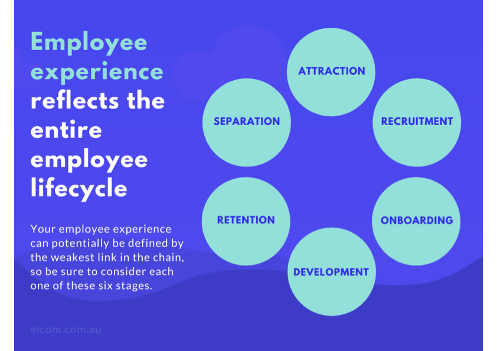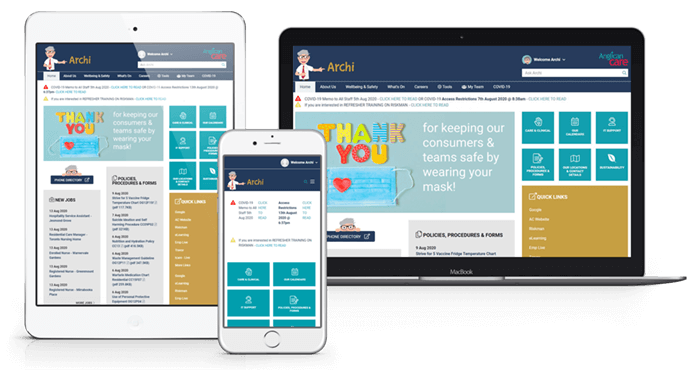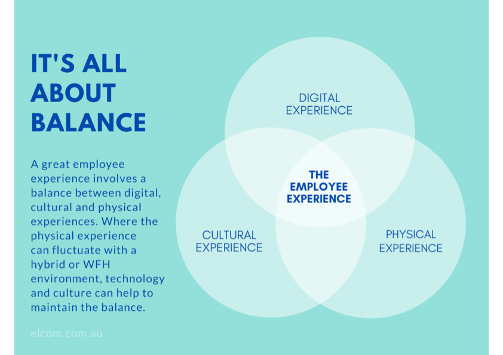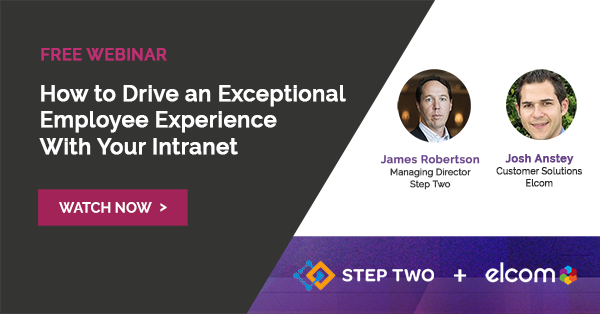If you don’t think employee experience is much of a priority right now, think again. Microsoft’s Work Trend Index, based on analysis of over 30,000 people and 31 countries, indicates that as much as 40% of the global workforce is considering leaving their employer this year. With so many people ready to make the leap, your employee experience should be front and centre for all organisations.
What is employee experience?
Your employee experience encompasses everything that employees see, feel and encounter as they work within your organisation. It can relate to every step of the employee lifecycle: from your onboarding process, to career development, and even to how employees feel as they leave your organisation. After all – based on your employee experience, past employees could either be resentful detractors or your biggest advocates!
Why does employee experience matter?
While you might already have significant strategies focused on customer experience (and rightly so), employee experience is often treated as an afterthought or not considered at all. But focusing on one without the other can be like filling a bucket with a hole in the side of it – because your employee experience directly influences your customer experience, as well as your employee engagement, retention, performance and development.
There’s also a huge cultural shift right as an increasing amount of organisations are attempting to implement and drive exceptional employee experiences. In the midst of what media outlets are branding ‘the Great Resignation’, millions of workers worldwide are considering whether they feel genuinely supported and valued by their employer – and prepared to walk if they don’t.
So how do we focus on attracting, and just as importantly retaining, top talent through an improved employee experience? Digital transformation can significantly improve the employee experience and ease many of the pressures and frustrations for employees, in the following ways.
1. Embrace flexibility as part of business, supported with a tailored intranet
Flexible and hybrid work is here to stay, even as we slowly ease out of pandemic arrangements. 75% of Australian workers expect that employers will support future work-from-home plans, optimally around two days per week so they can still have face-to-face time with colleagues.
The key to this is digital transformation and integration of your communication and collaboration tools, with modern intranet CMS software that can be tailored to your organisation’s ways of working.
To deliver a great digital employee experience that truly supports flexible work, a company's digital workplace must be 'always on'. It should also provide an enterprise-level search experience and make collaboration second nature from any location or device. Any siloed information should be converted to one central database, so it can be accessed by whoever needs it via personalised permissions based on their role, project or team.
2. Prioritise employee feedback through multiple channels: then act on it
Consulting with your employees about the best ways to support them has become increasingly important, particularly as the pandemic has introduced new and diverse pressures such as home schooling, changed working conditions and fluctuating job requirements.
With increased social discussion about harassment and misconduct in recent years, it’s also incredibly important that employees feel they can speak up about any such situations in a way that will not only be heard but also actively addressed.
Fortunately, digital tools now make it simple to gain employee feedback on both a large scale and an individual level.
You could quickly build up feedback polls and pulse surveys that await each employee on their custom dashboard; invite employees to a focus group event through your intranet event calendar; and gauge your employee Net Promoter Score over time with a simple digital form. Analysing and acting upon gathered feedback will foster a positive culture of transparency, so employees can stay invested and engaged in their role.

3. Help employees find meaning in their work on a daily basis
The best managers set clear expectations so employees can understand exactly what role their work is playing as part of the bigger picture.
Every part of the employee experience can benefit from clarity of expectations: from the initial job description at the recruitment stage, to ongoing performance reviews. With the right intranet platform, offering your employees a personalised intranet experience is simple. Personalised dashboards that outline each employee's micro and macro objectives is key to increasing engagement and supporting a remote workforce.
Of course, feedback and recognition are also invaluable in helping employees find meaning in their work. Employees who receive daily feedback from their manager are three times as likely to be engaged at work than those who receive feedback once a year or less, according to Gallup research.
Feedback and recognition doesn’t need to be difficult or time consuming when you can easily post daily or weekly videos from management, or update a digital noticeboard with recent wins for the organisation.
4. Turn frustrating processes into ones that simply work
The average organisation might now use a myriad of different apps for messaging, document management, customer relationship management, sales tools, learning management and more.
In all too many cases employees must simply accept the daily frustrations of managing multiple logins, copying and pasting data and re-entering information. Unfortunately these minor frustrations can be akin to death by a thousand cuts to the employee experience – but the frustrations are also completely avoidable.
Digital transformation with the right enterprise intranet solution can see your many platforms integrated into one digital experience platform, so employees need only log in once and search within one system to find what they need at any point.
It is particularly important to have a platform that caters to frontline, remote and other employees who work away from head office.
Processes are automated and improved; onboarding becomes smoother, HR processes become effortless, and there are fewer mistakes and miscommunications to patch up.

The redesigned intranet for Anglican Care, called Archi, has streamlined a number of processes and forms for staff. Quicklinks direct staff to key programs for their daily work, while a central calendar makes it easy to schedule and book training programs.
5. Personalise digital channels for employee development
Career upskilling and development is a key factor within the employee experience, because the last thing you’ll want is for employees to feel like they’re treading water in their role. However, professional development typically requires a lot of time and resources to manage via in-person processes, and a one-size-fits-all approach can often leave employees either struggling or bored.
For many organisations, webinars and personalised eLearning modules are the way forward for efficient and effective professional development. Employees can learn at their own pace with a clear, personalised visual training pathway ahead of them. You can automatically register users for courses; manage resources such as training rooms and trainers; and keep an eye on how everyone is tracking.
If a corporate learning management system is important to your organisation, be sure to factor this in when considering new intranet portal solutions.

6. Provide communication structures to combat burnout
Employers are quickly realising that productivity is not an accurate measure of employee experience.
The Microsoft Work Trend Index results show that while self-reported productivity has stayed around the same level over the past year, 54% of respondents feel overworked and 39% feel exhausted. Many of us are dealing with pings from our inboxes late at night as the distinctions between work and home life blur, and Zoom fatigue has become a well-known phrase!
Your intranet can be configured and governed in a way that provides much-needed structure around improving internal workplace communications. It’s possible to keep technical discussions focused using document-based collaboration, for example, while video calls could be reserved for more creative or open-ended topics.
Project-based workspaces can help to slash the number of emails and chats that can otherwise distract people from a task at hand. Employees will have greater ability to plan their workday, focus more deeply and spend less time catching up on work admin.
Related Resources
Have a lunch break to spare? This inspiring and practical webinar recording will help teams plan a way forward, showing how intranets can be at the heart of exceptional employee experiences.
